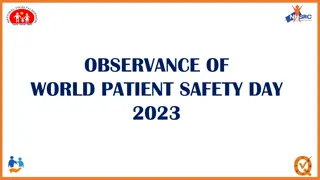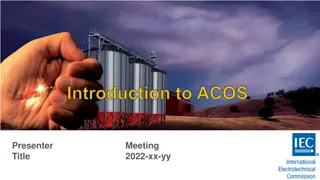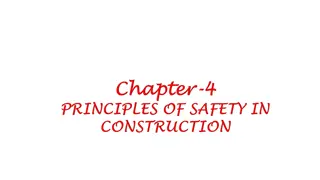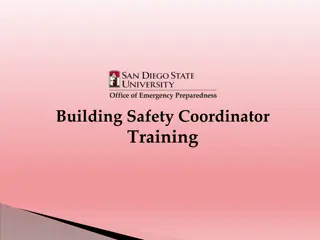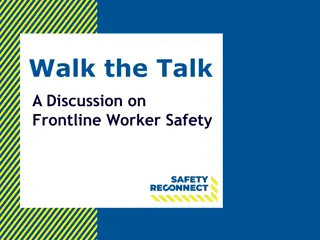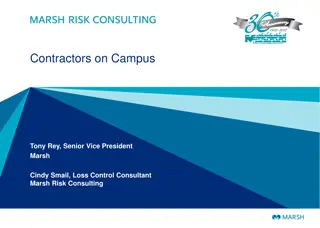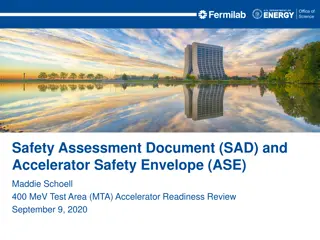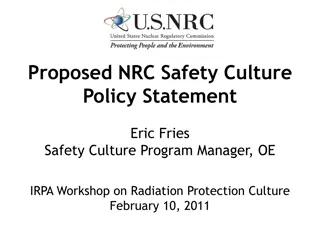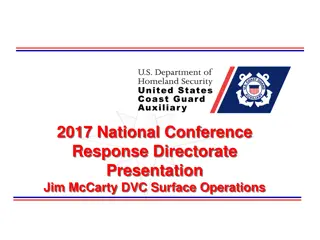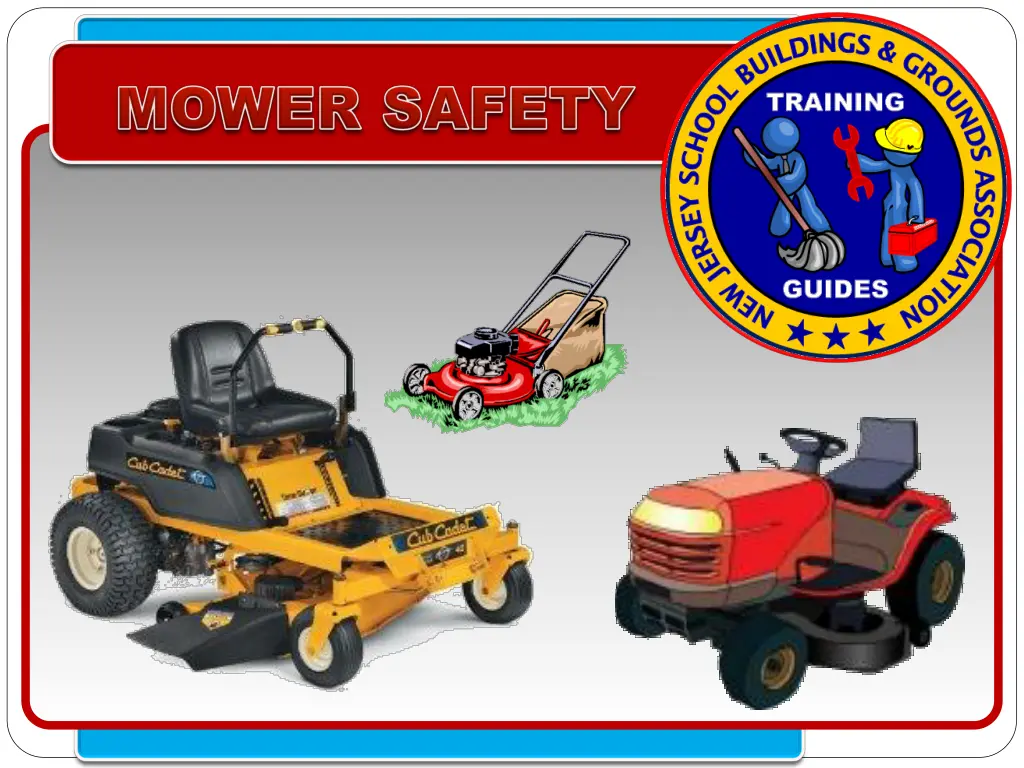
Operating a Lawn Mower: Safety Guidelines
Learn essential safety practices for operating a lawn mower to prevent accidents and injuries. Understand the importance of maintenance, proper equipment use, and pre-operation checks. Stay safe while mowing your lawn.
Download Presentation

Please find below an Image/Link to download the presentation.
The content on the website is provided AS IS for your information and personal use only. It may not be sold, licensed, or shared on other websites without obtaining consent from the author. If you encounter any issues during the download, it is possible that the publisher has removed the file from their server.
You are allowed to download the files provided on this website for personal or commercial use, subject to the condition that they are used lawfully. All files are the property of their respective owners.
The content on the website is provided AS IS for your information and personal use only. It may not be sold, licensed, or shared on other websites without obtaining consent from the author.
E N D
Presentation Transcript
Click to edit Master text styles Second level Third level Fourth level Fifth level
Click to edit Master text styles Second level Third level Fourth level Fifth level Not everyone knows how to operate a mower safely. In fact, what most people view as common sense can lead to accidents later. Although accidents are less for mowers than some other areas, a number of injuries, even death, may occur if safety practices are ignored or abused.
Click to edit Master text styles Second level Third level Fourth level Fifth level attached to some vehicle frames to help prevent the vehicle from upsetting more than 90 degrees, and prevent the occupant from being crushed if an upset does occur. Power Take Off or PTO is the area of the machine where rotating torque is directly transferred to another machine or tool. In the mower case, the rotating torque is used to turn the mower blades. Roll Over Protection System or ROPS is Deadman Switch is a device that will automatically turn the machine off if the operator should leave the driver's seat for any reason. It may also be used in the case of an equipment malfunction to turn the machine off.
Click to edit Master text styles Second level Third level Fourth level Fifth level These accidents are caused by; driving too fast, operating unsafely on uneven ground, operating a mower that has not been mechanically maintained, pushing the mower beyond safe operating limits. Trivia #1: Although there are few accidents with mowers, a number of injuries occur when mowers are in use.
Click to edit Master text styles Second level Third level Fourth level Fifth level Guidelines for getting familiar with your equipment Using a safety checklist Personal protective equipment If problems can be identified before stepping into the driver's seat, needless accidents can be prevented and the equipment will remain properly maintained. Pre-Operation procedures can be broken down into three areas. These are:
Click to edit Master text styles Second level Third level Fourth level Fifth level before turning on the machine Guidelines for getting familiar with your equipment: Read the operator s manual first Make all necessary adjustments Observe and question a skilled operator until comfortable with procedures. Practice operating in an open area first.
Click to edit Master text styles Second level Third level Fourth level Fifth level 66% of the farm tractors in the United States. In 1995, overturns accounted for 55% of all on-the-farm fatalities reported, with an annual rate of 5.5 deaths per 100,000 tractors.(National Safety Council Accidents Facts, p137) . Trivia #2: Overturns have the highest fatality rate for unintentional injuries involving tractors that occur on the farm, according to reports from 31 states covering about
Click to edit Master text styles Second level Third level Fourth level Fifth level Clean the steps and operating platform to prevent slipping. Ensure that tires are properly inflated. Check for correct tightness of bolts. Ensure a Slow Moving Vehicle (SMV) sign is installed and visible. Ensure flashing warning signs are present and operating when traveling on roadways. Make sure all protective guards are in place. Never remove guards. Determine that steering is responsive before beginning a job. Test the brakes. BE CAREFUL THIS MACHINE HAS NO BRAIN USE YOUR OWN Once installed, never remove guards, lights or signs. Ignoring these simple items can cause accidents.
Click to edit Master text styles Second level Third level Fourth level Fifth level Labor Statistics. Trivia #3: Employers reported 6.2 million non-fatal injuries and illnesses among mowers during 1996, and 5.8 million of those cases resulted in either lost work time, medical treatment or a job transfer, according to the Bureau of Never remove guards, flashing lights Never remove guards, flashing lights or Slow Moving Vehicle signs .. or Slow Moving Vehicle signs .. even if they are bothering you. even if they are bothering you.
Click to edit Master text styles Second level Third level Fourth level Fifth level and burns from exhaust. Hearing protection, such as earplugs or muffs, is suggested for prolonged noise exposure. Gloves can't always prevent a finger amputation, but they can guard against cuts, abrasions, chemicals and other skin irritants. Wear gloves that fit and wear the right type of glove for the job. Long pants should be worn to protect against hazards such as flying debris, skin irritants Dust masks will prevent inhalation of dust and other particles in the air. Do not use when working with chemicals, toxic gases, and or when there is an oxygen deficiency. Safety glasses should be worn, but give only frontal protection against thrown objects. If you wear glasses, ensure they have impact-resistant lenses. Remember to wear the right type of personal protective equipment for the job, keep the items clean and sanitary, and replace any items that wear out or become broken.
Click to edit Master text styles Second level Third level Fourth level Fifth level hands, nose, legs and feet. Trivia #4: Most Mower accidents occur between April and October, with June being the peak accident month. Wear personal protective equipment for ears, eyes, Keep the items clean and sanitary. Tape and repair any items that wear out or become broken.
Click to edit Master text styles Second level Third level Fourth level Fifth level 1.General Safety Procedures 2.Operating on Uneven Ground 3.Avoiding Thrown Object Hazards There are 3 kinds of procedures for safely operating mowers:
Click to edit Master text styles Second level Third level Fourth level Fifth level The operator should not adjust any mechanism of the equipment while the mower is running, but should follow the above procedures, making sure all parts have stopped moving. When driving between mowing jobs, crossing a road, path or sidewalk, or when not using the mower, the operator should disengage the PTO to stop the mower blade. Operators should not mow in conditions where traction or stability is questionable. If uncertain, test drive a section with the PTO off. Never refuel equipment while the engine is running or extremely hot. A fire or explosion could result. These procedures may sound like common sense, but they are often abused by operators and can result in minor or major injuries. Only the operator is allowed on the equipment. No passengers allowed! When leaving the seat, the operator should disengage the PTO, engage the brake, stop the engine, and wait for all parts to stop before dismounting.
Click to edit Master text styles Second level Third level Fourth level Fifth level structure (ROPS) and a seat belt. Trivia #5: Over half of tractor/mower-related deaths result from overturns. Most go over sideways; some go over backward. Chances of survival are better if your tractor/mower is equipped with a rollover protective Disengaging the Power Take Off (PTO), putting on the brake, stopping the engine, and waiting for all parts to stop moving before getting off the mower, are good common sense rules to follow.
Click to edit Master text styles Second level Third level Fourth level Fifth level uneven ground. Even when ROPS is used, operators remain at risk and therefore should evaluate each situation on the safest way to mow. If an area is too sloped or the ground is deemed too uneven to operate the mower safely, use a weedeater or pushmower. Operating on uneven ground is the number one cause of accidents due to rolling of the machine. Since not all machinery is equipped with ROPS, mower operators have been killed or severely injured by improper operation on
Click to edit Master text styles Second level Third level Fourth level Fifth level If available, install rear and/or front wheel weights to increase stability, steering, and traction. Refer to the machine's operating manual for installing these. Before mowing on even ground, prepare the machine: Lock the differential for better traction on slopes and in slippery places. even Slow down the travel speed so that you can see and react to hazards in your path. Overturns are four times more likely to occur when speed is doubled. Be on the alert for holes and ditches covered by grass or debris. A wheel may drop and cause an overturn.
Click to edit Master text styles Second level Third level Fourth level Fifth level Do not stop when going up hill or down hill. If the mower stops going up hill, turn off the PTO and back down slowly. When mowing on uneven uneven ground. . . Drive up and down a hill, not across. Do not try to stabilize the mower by putting your foot on the ground. If in doubt, do not mow on uneven ground.
Click to edit Master text styles Second level Third level Fourth level Fifth level Saving yourself time by Saving yourself time by operating in an unsafe operating in an unsafe situation could cost you situation could cost you life or limb. life or limb. When operating on uneven ground, watch for holes and ditches covered by grass and debris.
Click to edit Master text styles Second level Third level Fourth level Fifth level Since most newer model mowers now have optional equipment that catches cut material, it is less important than it once was for operators to be aware of thrown object hazards. However, many mowers without the optional equipment are still in use. This makes it necessary for all operators to be aware of and control for these hazards. To avoid these hazards . . . Operators should check areas where grass and weeds are high enough to hide debris that could be struck and thrown. The area should be closely inspected before mowing and these objects collected. Areas with high grass and weeds should be mowed to an intermediate height, inspected a second time, then mowed again to the desired height. To avoid hitting people and animals, operators should estimate how far and in what direction objects may be thrown. Equipment shields must remain in place and not be removed. The shields help prevent objects from being thrown.
Click to edit Master text styles Second level Third level Fourth level Fifth level all guidelines to ensure safety of all guidelines to ensure safety of the people, animals, equipment, the people, animals, equipment, and the operator. and the operator. Operators must recognize the Operators must recognize the throwing capabilities of the throwing capabilities of the equipment being used and follow equipment being used and follow First walk and check areas to be mowed, looking for and removing objects that might be thrown.




